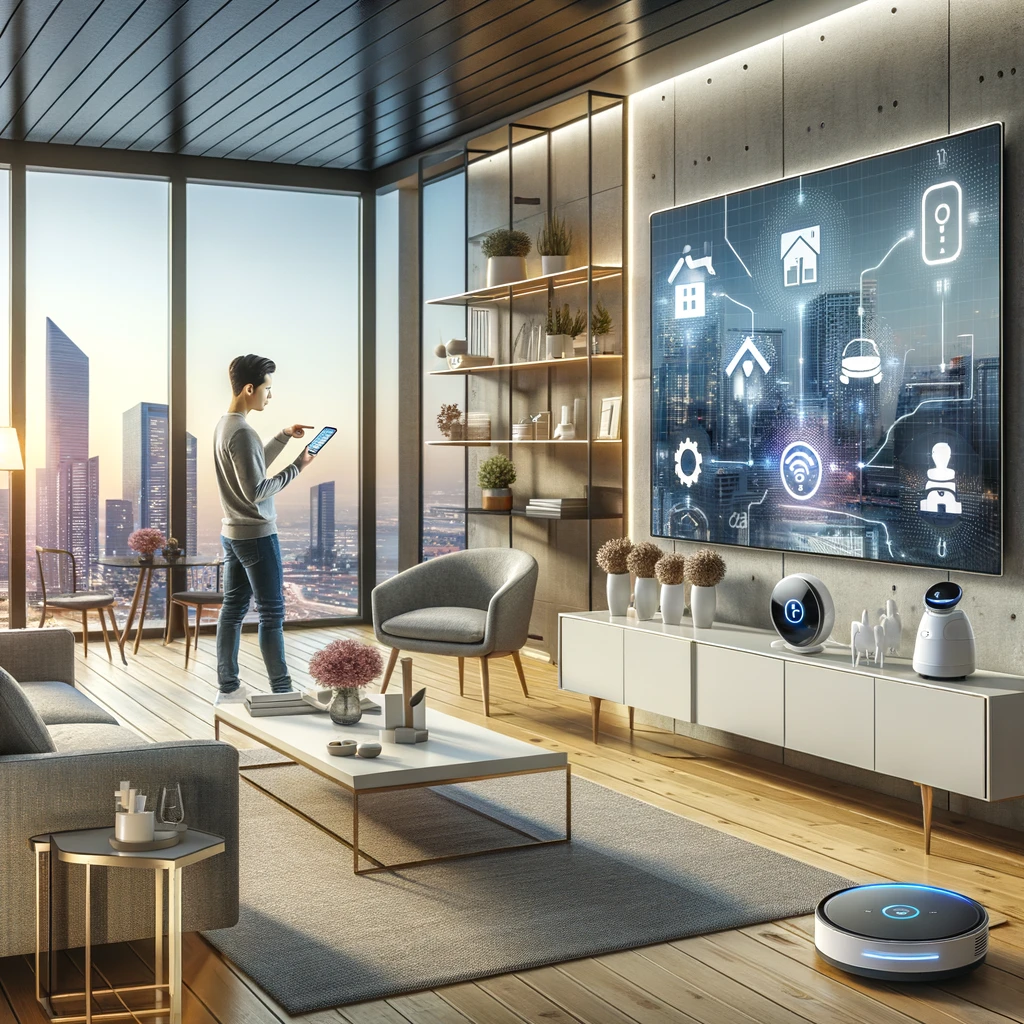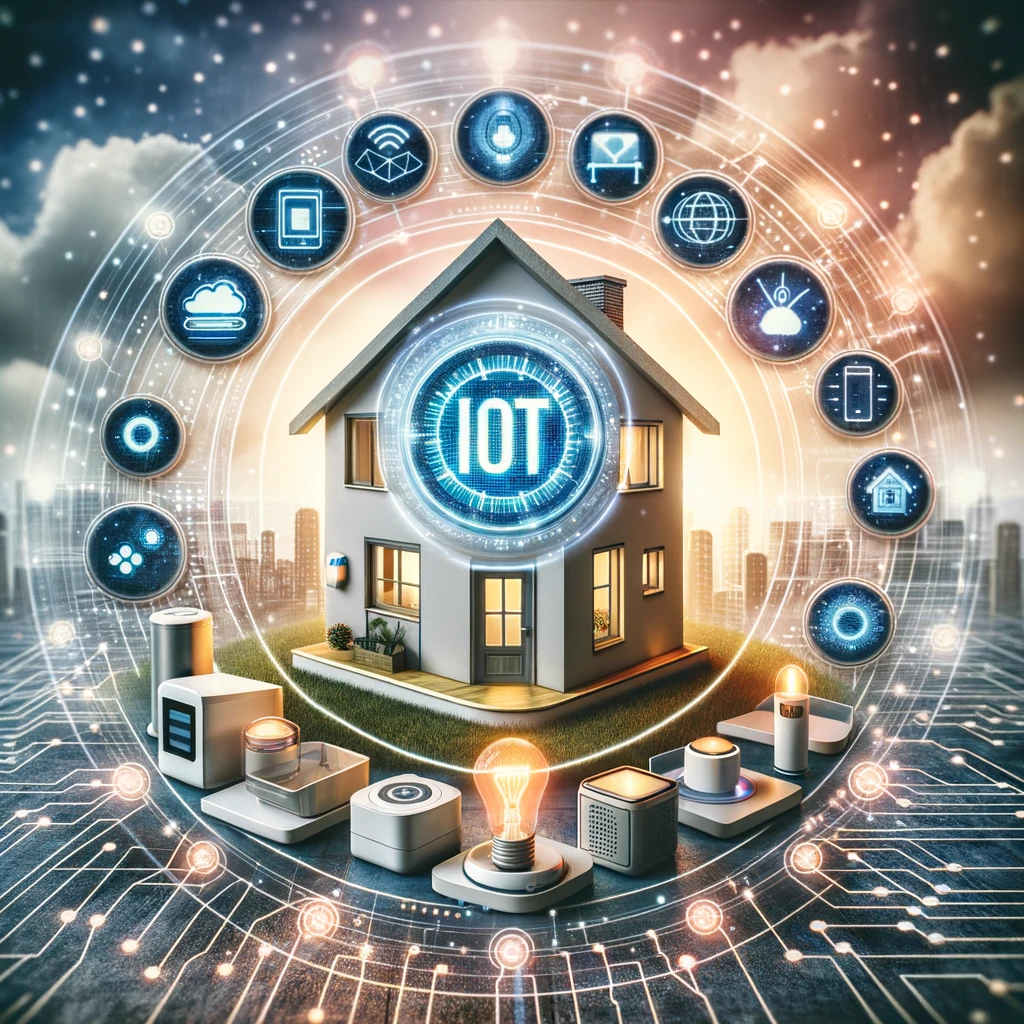Smart home technology, also known as home automation or domotics, empowers homeowners to remotely manage appliances, thermostats, lights, and other devices via an internet connection, using a smartphone, tablet, or other networked devices. This innovative technology enhances home security, comfort, convenience, and energy efficiency. You can also read our article titled What is a Smart Home?

Users can control smart devices, including off-the-shelf products like Philips Hue bulbs and custom appliances, through apps like Amazon Alexa, Google Home, and Siri. Home automation systems are highly customizable, offering solutions that fit various wants, needs, and budgets. They can automate daily tasks, boosting efficiency, style, and connectivity, all controllable from a single device. This tech represents the pinnacle of modern living, providing limitless convenience and integrating seamlessly into daily life.
How Would You Define a Smart Home?
A smart home is a residence equipped with internet-connected devices that enable remote monitoring and management of various systems and appliances. This setup includes control over lighting, heating, home entertainment, security (including locks and cameras), and power controls like switches and smart plugs. Users can remotely operate these devices through a smartphone or computer, often using a smart home app. This technology, part of the Internet of Things (IoT), enhances home security, comfort, and energy efficiency, automating actions based on homeowner preferences.
Smart homes, which can be established via wireless or hardwired systems, are also recognized for their energy efficiency, saving time, money, and energy. Essentially, a smart home integrates a communications network connecting key appliances and services, allowing for remote control, monitoring, and access, defining a new era of convenience in home management.
Is Smart Home an IoT?
Smart home technology, an integral part of the Internet of Things (IoT), refers to a system where various household devices and appliances are interconnected via the internet, allowing remote control and automation. This system encompasses a wide range of devices including thermostats, lighting, security cameras, and entertainment systems, all controlled using smartphones, tablets, or voice assistants. The essence of a smart home lies in its ability to enhance security, comfort, convenience, and energy efficiency for homeowners. By automating everyday tasks and enabling remote operation, smart homes transform the living experience by providing real-time monitoring and management of domestic functions.

Furthermore, smart homes contribute to energy conservation and sustainability by optimizing device usage. The IoT serves as the foundation of smart homes, enabling seamless integration and data exchange among devices, thereby facilitating intelligent decision-making and personalized automation based on user preferences. The future of smart homes, fueled by advancements in IoT and artificial intelligence, promises even greater automation, security, and efficiency, redefining our interaction with technology in the domestic space.
How is a Smart Home Made?
Creating a smart home involves integrating a range of interconnected devices that can be remotely controlled and automated via an internet connection. Key components include a central control device like Amazon Echo or Google Nest, and various smart devices like lights, thermostats, security cameras, smart locks, and sensors for movement or temperature changes. These devices can be controlled through smartphones or tablets, enabling functions like remote temperature adjustment, home security monitoring, and even control of multimedia systems. Smart home technology generally operates through either wireless or hardwired systems.
The integration of these devices, known collectively as the Internet of Things (IoT), allows for enhanced security, convenience, and energy efficiency. While comprehensive smart home automation can be costly, individual products like smart plugs or light bulbs provide an affordable entry point. Smart homes can be set up gradually, beginning with basic elements and expanding to more complex systems, ultimately offering a blend of convenience, efficiency, and modern living.
What are Examples of Smart Devices?
Smart devices, integral to the Internet of Things (IoT), are advanced electronic tools interconnected via various wireless protocols like Bluetooth, Zigbee, Wi-Fi, and 5G, enabling interactive and autonomous operation. Examples include smartphones, smart speakers, smart cars, thermostats, doorbells, locks, refrigerators, tablets, smartwatches, and smart glasses. These devices are often equipped with a hardware layer for signal transmission, a network layer for inter-device communication, and an application layer for user commands.

Key features include system hardware and software resources, dynamic resource extensions, remote and local service execution, and interaction with diverse external environments. Smart homes, embodying these devices, contain sensors and devices controlled by a central system.
Smart devices, varying in form factors like tabs (smartphones, smart cards), pads (laptops), and boards (interactive displays), offer enhanced security and efficiency, ranging from personal convenience to energy savings. They can operate autonomously, handle dynamic actions, and may incorporate artificial intelligence for intelligent decision-making. Smart home environments encompass physical, human-centered, and virtual computing spaces, where these devices perform various functions like lighting control, temperature regulation, and home security, enhancing the living experience with efficiency and convenience.
How Efficient is a Smart Home?
Smart homes significantly enhance energy efficiency through advanced technologies that intuitively adjust to varying energy needs. Equipped with smart devices like thermostats and appliances, these homes can detect and minimize waste of electricity, water, and gas. By adapting to homeowner lifestyles, smart homes intelligently conserve energy, for instance, by only heating rooms in use. This level of automation can lead to energy savings of up to 30-40%. The integration of solar panels further aids in self-sustaining energy consumption, prioritizing renewable energy. Additionally, smart homes meticulously monitor electricity usage, informing homeowners about consumption patterns and suggesting ways to reduce energy use. Remote control capabilities allow homeowners to manage their home systems from afar, optimizing energy use based on real-time data. In essence, smart homes not only cater to the convenience and safety of residents but also significantly contribute to environmental sustainability by reducing energy consumption and promoting efficient use of resources.










